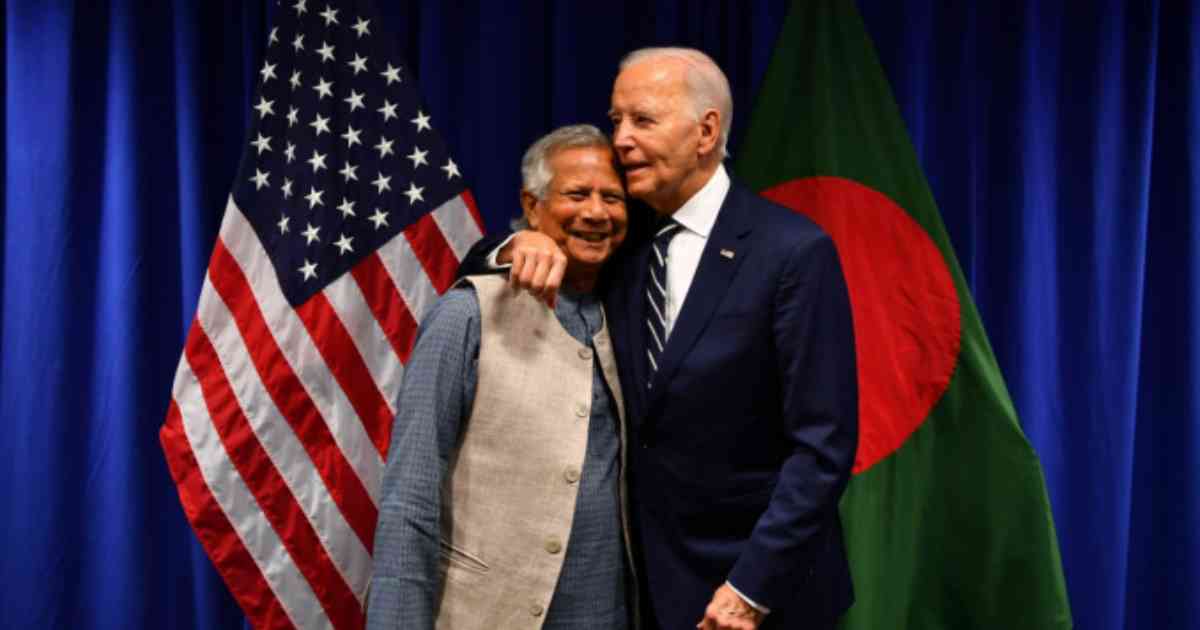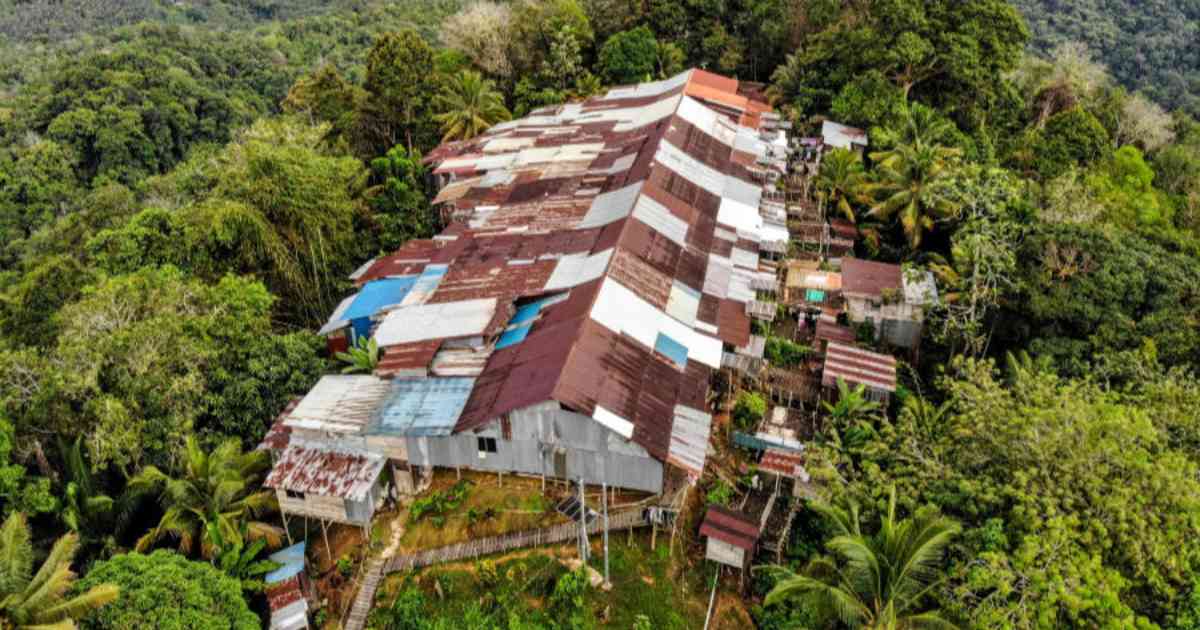World Biz
Israel, Hezbollah faceoff raises risk of wider conflict

Regular puffs of smoke from missile intercepts over northern Israel and fires from air strikes in southern Lebanon are outward signs of a fear that the Gaza war may be expanding into a wider conflict, which analysts say poses risks for both sides.
The stark threats on Wednesday from Sayyed Hassan Nasrallah, the head of Hezbollah, that nowhere in Israel would be safe in the event of a war, and that even Cyprus and other parts of the Mediterranean would be in danger was the latest salvo in a rhetorical barrage from both sides.
Hezbollah has been firing rockets at Israel in solidarity with its Palestinian ally Hamas since the Gaza war erupted in October, forcing tens of thousands to flee homes in Israel, where political pressure is building for tougher action.
Tens of thousands of Lebanese have also fled their homes following Israeli strikes in south Lebanon.
Concerned at the risk of a slide into a war that could spread across the region, US President Joe Biden sent his special envoy Amos Hochstein to embark on a new round of diplomacy this week and Secretary of State Antony Blinken told Israeli officials to avoid further escalation.
On Thursday, Israeli jets hit targets in southern Lebanon and killed a Hezbollah fighter it identified as a commander of the group’s operations in the Jouaiyya area. Hezbollah acknowledged his killing but did not identify him as a commander. After a brief pause over the Eid holiday, Hezbollah fired dozens of missiles into Israel.
“None of the options is good but the big question is, how much can Israel suffer under this attack?” said Orna Mizrahi, a former official in Israel’s National Security Council. “I think most of the government don’t really want to get into a war, but it’s possible that we are getting there.”
In Lebanon, Nasrallah’s comments left many bracing for a wider war. But some diplomats and analysts said his threats were an attempt to match the escalating rhetoric from Israel.
“To me, now this is part of a deterrent strategy,” said Hubert Faustmann, political analyst and professor of history and international relations at the University of Nicosia.
“There is a high danger of Israel escalating the confrontation with Hezbollah and an all-out, full-scale war, which I don’t think Hezbollah wants,” Faustmann added, saying Hezbollah was demonstrating what it “could do” if that were to happen.
Hezbollah has indicated it is not seeking a wider conflict, even as it has steadily drawn on more potent weaponry.
While Israel has the most powerful army in the Middle East, Hezbollah has thousands of fighters, many with experience in the Syrian civil war, and an arsenal of tens of thousands of missiles capable of hitting cities all over Israel.
It also has a large fleet of drones, one of which appears to have carried out an extended flight over the port city of Haifa this week, underlining the potential threat to key economic infrastructure including power systems.
Israeli Prime Minister Benjamin Netanyahu has warned Israel would “turn Beirut into Gaza” in the event of a war. But a wider escalation could also overwhelm Israel’s famed Iron dome missile defence system that has so far intercepted most of the hundreds of missiles fired by Hezbollah.
“My sense is that Hezbollah feels it has some leverage over the Israelis, because an escalating war – as much damage as it might do in Lebanon and Syria – would create terror in Israel,” said Seth G. Jones, an analyst at the Centre for Strategic and International Studies in Washington. “It would be a tall order for Israeli air defences to confront the widespread rocket arsenal coming from the north. It would be a huge problem.”
OPERATIONAL ORDERS
For weeks, Israeli commanders have been holding training exercises and assessments in preparation for what the military called “a reality where we will have to fight on a different scale in the north.”
Fighting in Gaza, the main theatre of war since the Hamas-led attacks on Israel on Oct. 7, has continued, and Israeli officials have assessed that the end of the main phase of fighting is weeks away.
Many units need rest and refitting after intense combat in Gaza, but this week, the army’s northern command said it had approved operational plans for an offensive in Lebanon.
Energy Minister Eli Cohen said on Thursday the military was working with energy authorities to ensure that Israel’s strategic electricity infrastructure was protected and said that Israel would retaliate strongly to any strike against it.
Lebanon’s power infrastructure is already crippled, a result of decades of poor government and conflicts, including with Israel.
Israel has had a bruising experience in Lebanon in the past. After its forces invaded in 1982, they were stuck holding a buffer zone for nearly two decades after a war which saw the birth of Hezbollah. A second war in 2006, started after Hezbollah captured two Israeli soldiers, left the Iranian-backed movement in place miles beyond the UN agreed ceasefire line on the Litani river and steadily strengthening.
But the political pressure on Netanyahu has swelled as summer begins, with no indication of when life will return to normal more than eight months after the beginning of the conflict.
Dozens of Israeli towns are deserted, with around 60,000 people evacuated to temporary accommodation, leaving empty streets with the occasional building scarred by rocket fire. Some 90,000 have also fled from southern Lebanon.
Sarit Zehavi, a former Israeli military intelligence official who runs a think tank that specialises on Israel’s northern border said that after the trauma for Israel of Oct. 7, few of those who have left their homes would be ready to return while Hezbollah remained entrenched over the border.
“For 17 years, we did nothing against the threat and now dealing with it will cost a very high price.”

World Biz
Global Leaders Convene in Guilin to Chart Future of Tourism

The 2025 UN Tourism/PATA Forum on Tourism Trends and Outlook, held from September 18-20, concluded in Guilin, China, bringing together leading figures from over 20 countries to address the industry’s most pressing challenges. Jointly hosted by the UN World Tourism Organisation (UN Tourism) and the Pacific Asia Travel Association (PATA), the three-day event centered on building a more resilient, sustainable, and “smart” tourism sector.

- Tourism Governance: Led by UN Tourism, this session featured policy insights and international cooperation models from countries including Slovenia, Indonesia, and Brazil.
- Tourism Resilience in the Asia-Pacific: Organized by PATA, this discussion included practical case studies from Nepal and Spain, providing real-world examples of how destinations are adapting to challenges.
- Tourism Talent Development: Hosted by The Hong Kong Polytechnic University, this pillar focused on cultivating a skilled workforce to meet the evolving demands of the industry.

A dedicated Guilin Session also explored innovations in the meetings, incentives, conferences, and exhibitions (MICE) sector, with contributions from Greece, South Korea, and China.
A major highlight of the forum was the global launch of UN Tourism’s latest World Tourism Barometer, which provided updated data on international travel flows and economic impacts. Keynote speeches from industry giants like TUI Group offered a deep dive into European tourism markets, while Alipay’s Fliggy showcased new models in digital tourism. These presentations were followed by panels on the future of smart tourism destinations and new methods for tourism economic measurement.

The forum’s opening ceremony on September 19 featured addresses from Liu Shijun of UN Tourism and the President of PATA, along with local leaders. Their insights, combined with valuable case studies from delegates and experts from countries like the Maldives and institutions such as South Korea’s Youngsan University, laid the groundwork for the “Guilin Solutions”—a set of recommendations designed to advance sustainable and intelligent tourism worldwide.
Beyond the formal sessions, delegates were given a first-hand look at Guilin’s efforts to become a world-class tourism destination. Visits to local cultural and tourism landmarks demonstrated how the city is integrating culture, technology, and sustainability into its tourism strategy. The forum not only reinforced Guilin’s position as a hub for international dialogue but also offered concrete steps for building a more resilient and innovative global tourism industry.
Economy
Biden Pledges US Support to Yunus-Led Interim Government in Historic Meeting

US President Joe Biden has expressed his nation’s full backing for Bangladesh and the interim government led by Muhammad Yunus during a bilateral meeting held on the sidelines of the United Nations General Assembly (UNGA) in New York. This marks the first time in Bangladesh’s history that a US president has met with the country’s head of government at a UNGA session, as confirmed by a statement from the Chief Adviser’s Office.
In this unprecedented encounter, Chief Adviser Prof Yunus briefed President Biden on the significant sacrifices made by students who fought against the previous government, leading to the opportunity to rebuild the country. Prof Yunus underscored the importance of succeeding in this national rebuilding effort, calling for US cooperation in the process.
President Biden praised the students’ dedication, stating that their sacrifice calls for further commitment from all, including the US. During the meeting, Prof Yunus presented Biden with a copy of The Art of Triumph, a book featuring wall paintings by students and young revolutionaries.
Prof Yunus, on his first visit to the US as head of Bangladesh’s government, is attending the 79th UNGA, which runs from September 19 to 30. The theme of this year’s debate is “Leaving no one behind: acting together for the advancement of peace, sustainable development, and human dignity for present and future generations.”
Rare Diplomatic Meeting Signals Strengthened US-Bangladesh Ties
Speaking on the significance of the meeting, Chief Adviser’s Press Secretary Shafiqul Alam highlighted the rarity of such an engagement, noting that the US and Bangladesh already enjoy strong relations. “This meeting elevates our relationship to a new level,” Alam stated, as reported by local media.
Observers suggest that the bilateral meeting, which is uncommon for US presidents during the UNGA, signals Washington’s intention to support Bangladesh through its transitional period. Dhaka is hopeful that the encounter will lead to a new strategic partnership that enhances cooperation on multiple fronts.
Yunus Receives Warm Reception from Global Leaders
Earlier in the day, Chief Adviser Muhammad Yunus was welcomed by several world leaders at a reception hosted by UN Secretary-General Antonio Guterres. Held at the North Delegate Lounge in the UN headquarters, the event served to greet the leaders participating in the 79th session of the UNGA.
During the reception, Yunus exchanged greetings with Brazilian President Luiz Inacio Lula da Silva, Mauritian President Prithvirajsingh Roopun, and UN High Commissioner for Human Rights Volker Turk, among others.
Yunus Meets Canadian Prime Minister Trudeau
On the sidelines of the UNGA, Chief Adviser Yunus also met with Canadian Prime Minister Justin Trudeau. The two leaders discussed ways to enhance Bangladesh-Canada relations, focusing on fostering freedom, institution-building, and youth development in Bangladesh.
Prime Minister Trudeau commended Prof Yunus for taking on the leadership role and reiterated Canada’s willingness to support Bangladesh in strengthening its institutions. Prof Yunus, in turn, praised Canada for its enduring friendship and requested increased visa allocations for Bangladeshi students.
The chief adviser also gifted Trudeau The Art of Triumph, further highlighting the contributions of young revolutionaries. In addition to Trudeau, Yunus is scheduled to meet with the managing director of the IMF, the Italian prime minister, and will speak at the Clinton Global Initiative and Friends of Bangladesh events.
World Biz
Environmental groups urge EU ‘high risk’ label for Sarawak

Environmental and rights groups urged the European Union Tuesday to label Malaysia’s Sarawak region “high risk” under controversial new anti-deforestation rules to be implemented from the end of December.
The EU’s deforestation regulation (EUDR) is due to come into force at the end of the year, although Germany and Brazil have recently joined a string of countries urging that implementation be delayed.
Environmentalists and rights groups have, however, called on the EU to move forward with the regulation.
It will bar imports of a vast range of goods — from coffee to cocoa, soy, timber, palm oil, cattle, printing paper and rubber — if they are produced on land that was deforested after December 2020.
It also requires exporters to assess the risk of rights violations associated with production of the commodity.
In a joint statement, a group of Malaysian and international organisations said Sarawak in Malaysian Borneo should be considered “high risk” under the new rules.
Such a designation would mean closer scrutiny of timber and palm oil imported from the region — an unwelcome prospect for Malaysia, which is already pushing back against EUDR.
The NGOs argue Sarawak’s government plans to convert hundreds of thousands of hectares of natural forest to timber plantations, and is granting companies operating leases in areas that have not been surveyed for protection purposes.
Earlier this year RimbaWatch, one of the signatory groups, warned that around 15 percent of Malaysia’s natural forest is at risk because of concessions granted to companies.
Tuesday’s statement also alleges routine violations of Indigenous land rights, including limits on the amount of land that can be legally recognised, and the unilateral revocation of existing land titles.
“Logging companies are still bulldozing Indigenous peoples’ forests in Sarawak without consultation or consent from communities, which should translate into a ‘high risk’ classification,” said Celine Lim, managing director of SAVE Rivers, an Indigenous organisation from Sarawak.
– Vocal opponents –
Sarawak’s forestry department, and Malaysia’s plantation and commodities ministry did not respond to AFP’s request for comment on the claims.
Malaysia and Indonesia have been among the most vocal opponents of EUDR, arguing domestic anti-deforestation standards should be sufficient, and warning the rules will disproportionately harm smallholder producers who cannot meet onerous documentation requirements.
Environmental and rights groups have pushed back against these claims, including at talks in Brussels earlier this month between EU, Indonesian and Malaysian officials.
“Calls from EU governments to delay enforcement of the law are a deplorable abdication of leadership in the face of a climate emergency,” said Luciana Tellez Chavez, senior
environment and human rights researcher at Human Rights Watch.

